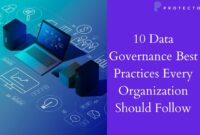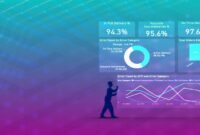Natural Language Processing in BI: Making Data Accessible to All is an exciting exploration into how technology is transforming the way we interpret and utilize data. In a world increasingly reliant on data-driven decisions, the integration of natural language processing (NLP) into business intelligence (BI) tools is setting the stage for a more inclusive and intuitive data experience. By enabling non-technical users to interact with data using everyday language, NLP is demystifying analytics and empowering organizations to make informed decisions faster.
The significance of NLP in BI cannot be overstated, as it enhances accessibility, allowing users from various backgrounds to derive insights without needing extensive training. This revolution not only bridges the gap between data and decision-makers but also fosters a culture of data literacy across all levels of an organization.
In today’s rapidly evolving world, the importance of effective communication cannot be overstated. Whether in personal relationships, at work, or in digital interactions, the way we convey our thoughts and feelings can significantly impact our success and well-being. This article aims to explore the fundamental aspects of communication, the various forms it can take, and tips for enhancing your communication skills to foster better connections with others.First and foremost, let’s clarify what communication entails.
At its core, communication is the process of exchanging information, ideas, thoughts, or feelings between individuals or groups. This exchange can happen through various channels, including verbal, non-verbal, written, and visual means. Understanding these different forms is crucial for mastering the art of communication.Verbal communication is the most common form and involves the use of spoken words to convey messages.
It can take place in person, over the phone, or through video calls. The tone of voice, pace, and clarity of speech are vital components of effective verbal communication. For instance, speaking too softly may lead to misunderstandings, while speaking too loudly could come across as aggressive. Striking the right balance is essential for ensuring that your message is received as intended.Non-verbal communication, on the other hand, encompasses body language, facial expressions, gestures, and eye contact.
Often, what we do not say can speak volumes. For example, crossing your arms might suggest defensiveness, while maintaining eye contact can convey confidence and interest. Being aware of your body language and that of others can enhance your understanding of the situation and improve your responses accordingly.Written communication includes emails, text messages, reports, and social media posts. In a world increasingly dominated by digital interaction, honing your writing skills is more important than ever.

Clarity and conciseness are key when crafting written messages. Avoid using jargon or overly complex sentences that may confuse the reader. Instead, aim to express your thoughts in a straightforward manner. Proofreading your work for grammar and spelling errors is also crucial, as these mistakes can undermine your credibility.Visual communication involves the use of images, charts, graphs, and other visual aids to support or enhance a message.
This form of communication can be particularly effective in presentations or when conveying complex data. Remember that a picture is worth a thousand words, and using visuals can help clarify your message and engage your audience more effectively.Now that we’ve explored the various forms of communication, let’s discuss some strategies for improving your communication skills. One of the most effective ways to enhance your ability to communicate is to practice active listening.
This means fully concentrating on what the other person is saying, rather than merely waiting for your turn to speak. Show genuine interest by asking clarifying questions and providing feedback. This not only demonstrates that you value the other person’s input but also ensures that you fully understand their perspective.Another key aspect of effective communication is empathy. Putting yourself in someone else’s shoes can help you understand their feelings and viewpoints better.
When you approach conversations with empathy, you create a safe space for open dialogue. This is especially important in resolving conflicts or misunderstandings, as it allows both parties to express their concerns without feeling attacked.Additionally, adapting your communication style to your audience can greatly improve your interactions. Consider factors such as age, cultural background, and familiarity with the topic when deciding how to convey your message.
For example, when communicating with colleagues in a professional setting, maintaining a formal tone may be more appropriate. Conversely, when chatting with friends, a casual tone is likely to be better received.Moreover, being open to feedback can significantly enhance your communication skills. Encourage others to share their thoughts about your communication style, and be willing to make adjustments based on their input.
This not only demonstrates humility but also fosters mutual respect and understanding.In the age of technology, digital communication has become a dominant force in our interactions. Being mindful of how you communicate online is essential, as tone and intention can easily be misinterpreted in written form. To mitigate this, consider using emojis or exclamation points to convey enthusiasm, but use them sparingly to maintain professionalism.
Always think before you hit send; once a message is out there, it can be challenging to take it back.As we navigate the complexities of communication, it’s important to remember that misunderstandings are a natural part of human interaction. When they occur, approach the situation with a mindset geared towards resolution rather than blame. Address the issue calmly, seeking to clarify any miscommunication and finding a mutually agreeable solution.To sum it up, effective communication is a vital skill that can enhance every aspect of our lives.
By mastering the various forms of communication, practicing active listening, showing empathy, and being adaptable, you can significantly improve your interactions with others. Additionally, being mindful of digital communication nuances and embracing feedback will further refine your skills. Remember, the goal of communication is not just to convey a message but to foster understanding and connection. By investing time and effort into developing these skills, you will find yourself more capable of navigating the complexities of human interaction in both personal and professional contexts.




